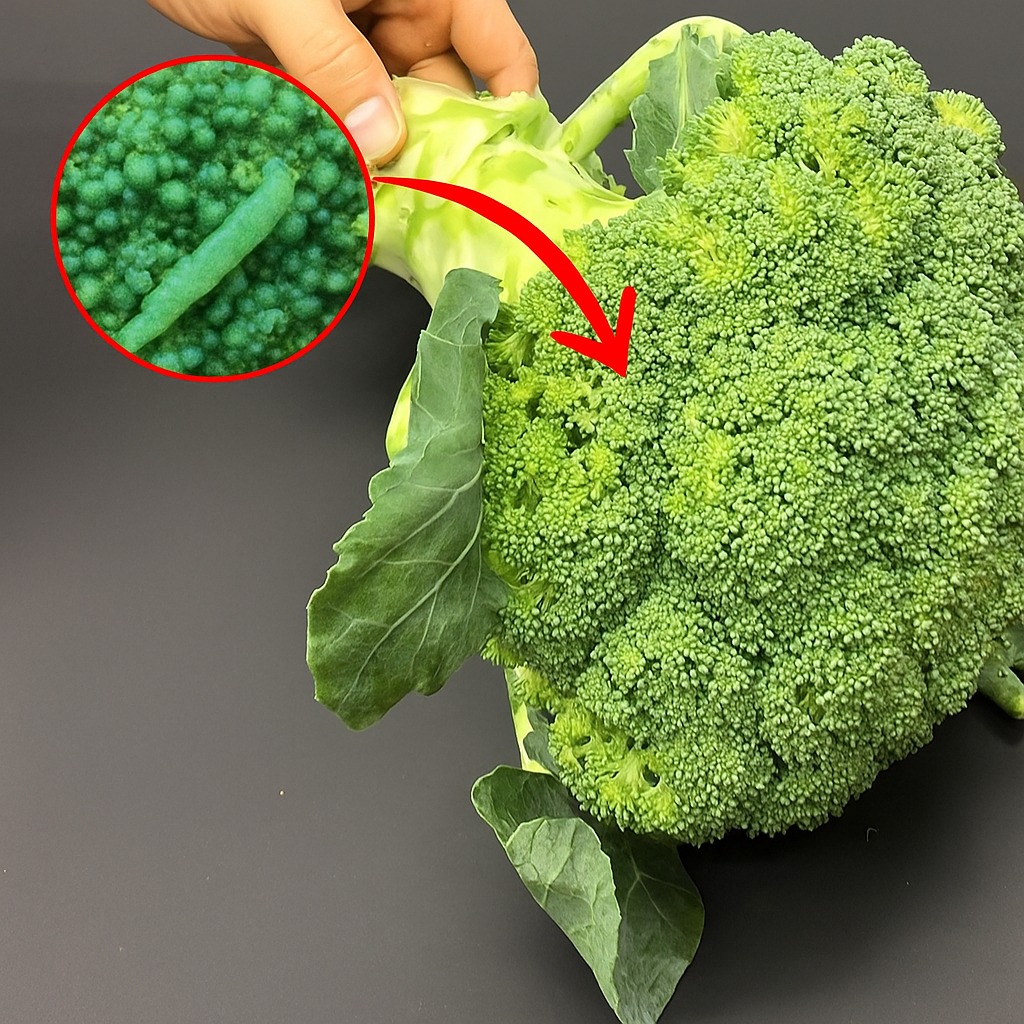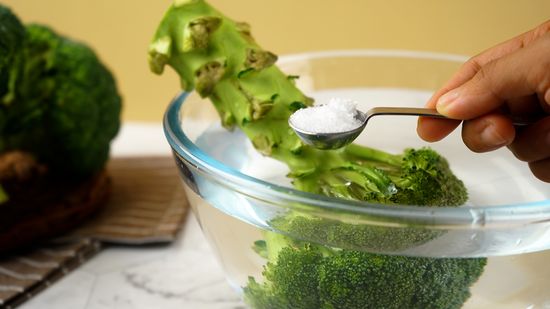
Broccoli is one of the healthiest vegetables you can add to your diet—packed with fiber, vitamins, minerals, and antioxidants. However, its compact, branching structure also makes it one of the most difficult vegetables to clean properly.
Many people make the mistake of rinsing it with just water, thinking that’s enough. But the truth is, that doesn’t fully remove pesticide residues, dirt, or tiny insects that can hide deep within its florets. To protect your health and get the full benefits of this superfood, it’s essential to know how to wash and disinfect broccoli the right way.
What’s the Proper Method for Washing and Disinfecting Broccoli?
Because of its unique shape, broccoli requires a more thorough cleaning process than many other vegetables. Here’s a step-by-step guide to doing it correctly:

1. Separate the Florets
Cut the broccoli into smaller pieces or florets. This helps water and cleaning agents reach all the crevices.
2. Soak in Water with Vinegar or Baking Soda
Fill a large bowl with water and add one of the following:
• Option 1: 1 part white vinegar to 3 parts water
• Option 2: 1 tablespoon of baking soda per liter of water
Soak the broccoli florets for at least 15 minutes. This helps remove pesticides, bacteria, and dirt.
3. Inspect and Rinse
After soaking, check carefully for any remaining dirt or tiny insects that may be trapped. Rinse thoroughly under running water, gently rubbing the florets with your fingers.
4. Drain and Dry
Place the broccoli in a strainer and let it drain. If you’re storing it raw, dry it with a paper towel to prevent excess moisture, which can lead to spoilage.

Why Is It Important to Wash Vegetables Properly?
• Remove pesticides and chemicals: Like many crops, broccoli may have traces of chemicals used during cultivation.
• Eliminate dirt and insects: Its dense structure can trap particles you might not notice at first glance.
• Prevent illness: Proper disinfection helps avoid bacteria like E. coli and salmonella, which can cause digestive issues.
Additional Tips
• Avoid soap or any non-food-safe cleaning products. Vinegar or baking soda are both safe and effective.
• Wash broccoli just before eating or cooking. Washing it in advance and storing it while damp can make it spoil faster.
• Blanching is also an option: Briefly boil the broccoli, then transfer it to ice water. This disinfects it and helps preserve its vibrant green color.
• Choose fresh-looking broccoli: Pick firm, evenly green pieces. Avoid any with yellow spots or signs of aging or oxidation.
Washing broccoli properly isn’t just about cleanliness—it’s about protecting your health. With these simple steps, you can enjoy this powerhouse vegetable safely and without hidden risks.